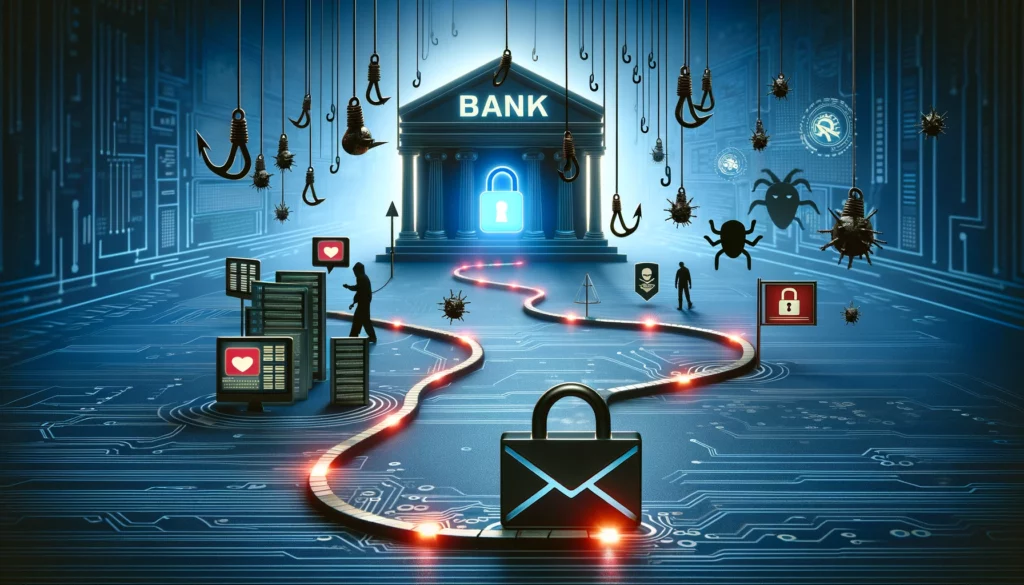In an era where digital transactions have become the norm, ensuring the security of banking operations is paramount. With the rise of online banking, mobile payments, and digital transfers, financial institutions must prioritize cybersecurity to protect their customers’ sensitive information and maintain trust in the digital economy. In this blog post, we’ll explore best practices for securing digital transactions in banking, empowering both financial institutions and their customers to navigate the digital landscape with confidence and peace of mind.
- Implement Multi-Factor Authentication (MFA): Multi-factor authentication adds an extra layer of security by requiring users to provide multiple forms of verification before accessing their accounts. This may include a combination of passwords, biometric data (such as fingerprints or facial recognition), security tokens, or one-time codes sent via SMS or email. By implementing MFA, banks can significantly reduce the risk of unauthorized access to customer accounts and protect against account takeover attacks.
- Encrypt Sensitive Data: Encryption is essential for protecting sensitive data transmitted over digital channels, such as online banking platforms and mobile applications. By encrypting data using strong cryptographic algorithms, banks can ensure that information remains secure and unintelligible to unauthorized parties, even if intercepted during transmission. Additionally, end-to-end encryption can safeguard customer communications and transactions from eavesdropping and man-in-the-middle attacks.
- Regularly Update and Patch Systems: Keeping banking systems and software up to date with the latest security patches and updates is crucial for addressing known vulnerabilities and reducing the risk of exploitation by cybercriminals. Banks should establish robust patch management processes to ensure timely updates and minimize the window of opportunity for attackers to exploit vulnerabilities.
- Monitor Transactions for Anomalies: Implementing real-time transaction monitoring systems allows banks to detect and respond to suspicious activity promptly. By analyzing transaction patterns and identifying anomalies, such as unusual spending behavior or transactions from unfamiliar locations, banks can mitigate the risk of fraudulent activities, such as card skimming, identity theft, and unauthorized fund transfers.
- Educate Customers on Security Best Practices: Empowering customers with knowledge about cybersecurity best practices is essential for enhancing banking security. Banks should provide educational resources, such as security guides, tips for creating strong passwords, and guidance on identifying phishing scams, to help customers recognize and mitigate potential threats. Additionally, regular security awareness training can raise awareness and promote a culture of security among bank customers.
- Secure Mobile Banking Applications: With the proliferation of smartphones and mobile banking apps, securing mobile transactions is paramount. Banks should implement robust security measures, such as secure authentication methods, device fingerprinting, and app sandboxing, to protect against mobile threats, such as malware, phishing, and unauthorized access. Regular security assessments and penetration testing can help identify and remediate vulnerabilities in mobile banking applications.
- Establish Comprehensive Fraud Detection and Prevention Mechanisms: Deploying advanced fraud detection and prevention systems enables banks to proactively identify and mitigate fraudulent activities in real-time. Machine learning algorithms, behavioral analytics, and anomaly detection techniques can help banks detect patterns indicative of fraudulent behavior and take immediate action to prevent financial losses and protect customer accounts.
By implementing these best practices, banks can enhance the security of digital transactions and protect against a wide range of cyber threats, ensuring the integrity and trustworthiness of banking operations in the digital age. As technology continues to evolve, it’s essential for banks to remain vigilant and adapt their security measures to mitigate emerging threats effectively. Together, let’s prioritize cybersecurity and create a safer and more secure banking experience for customers worldwide.

Penetra Cybersecurity is at the forefront of defending the digital frontier, providing cutting-edge solutions to protect businesses and organizations from the ever-evolving threats of the cyber world. Established with a mission to create a safer internet for everyone, Penetra leverages a blend of advanced technology, expert knowledge, and proactive strategies to stay ahead of cybercriminals.
Ready to take the next step towards a more secure future? Schedule a consultation with us today and discover how we can help protect what matters most to you. Don’t wait until it’s too late—with Penetra Cybersecurity, your business isn’t just secure; it’s imPenetrable.




